The first time I taught at a school that used standards based grading, I was a little worried… okay a lot worried. I was so used to giving percentage grades and I worried this would be more difficult and time consuming.
However, I quickly realized that that was not the case. In fact, standards based grading has made my job easier. Before standards based grading, I had to keep separate data on how students were doing on individual standards. Now, it is all kept in my grade book (which is FREE and will be linked later in this post). Because this type of grading has become more prevalent, I want to share with you 5 practical tips to help you with standards based grading.
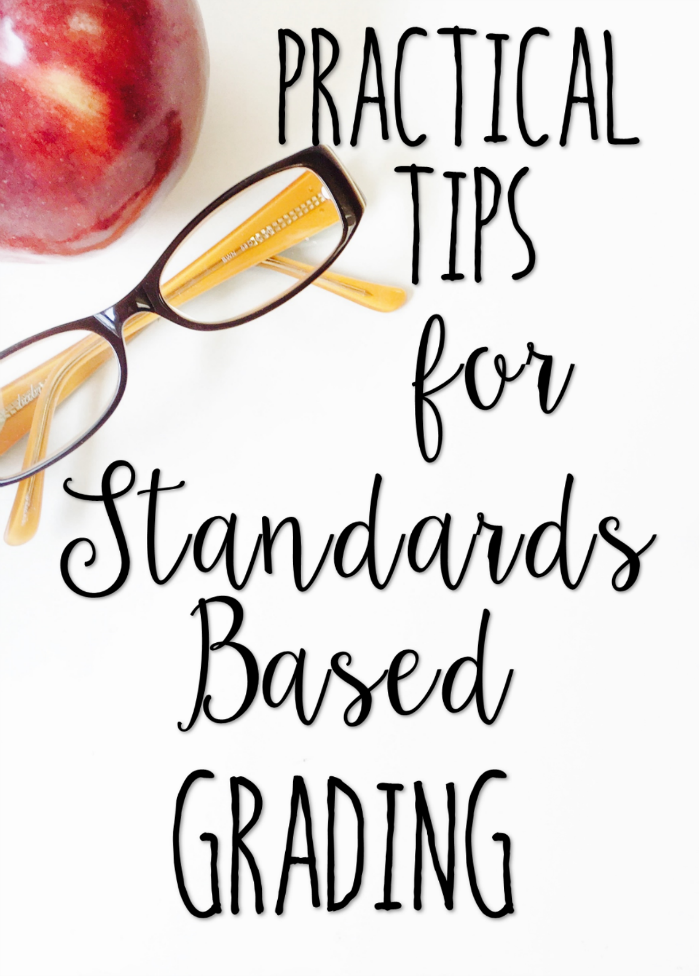
1. Assign percentages to each level of grading.
One of the quickest ways to ease students and parents (and teachers) into standards based grading is to assign percentages that are normally given to levels. In order to keep this consistent, meet with your grade level or grade chairs and create this together. This will keep it consistent among the grade level (and school, if possible).
Here is an example:
- 90-100: Level 3
- 80-70: Level 2
- 69 and below: Level 1
This way you can grade assignments with percentages and then quickly assign a level to them. This makes grading much easier and also helps transition parents and students. I usually write both the percentage and the corresponding level right on the assessment. Here is an example from on my common core aligned math assessments.
This assessment comes from my 5th grade math assessment pack which you can find here. I also have 4th grade which can you see here.
This tip would may be difficult if you teach in a district that uses a level 4 or exceeds expectations. My district only goes up to a level 3, so I have had no problems converting percentages to levels. However, you may want to keep that in mind if your district uses a level 4, which would be above a 100% on a percentage scale.
2. Before grading a lengthy task or written response, think through the requirements to get a 1, 2, etc before grading. Jot them on post it note to refer to it as you are grading.
I do this a lot when grading reading constructed responses. I will read the question and then based on the requirements of the question, write down what each level will look like. This does take time at first, but by mid-year doing this, I was super quick at it. Here is an example of how I did this with a theme question.
What is the theme of the story? Provide evidence that supports your answer.
- Level 1: Does not provide a theme and instead talks only about the plot.
- Level 2: Provides an acceptable theme but does not provide evidence.
- Level 3: Provides an acceptable theme and one piece of supporting evidence.
- Level 4: Provides an acceptable theme and two or more pieces of supporting evidence.
When I am ready to grade, I keep my paper of what each level should look like right beside me. This little tip may sound simple but it makes grading those tricky questions less subjective and a lot easier on the teacher!
3. Create or adjust rubrics accordingly to fit your levels.
One thing that has changed over the years is the move to more complex math tasks. You can read more about how I teach my students multi-part math problems and tasks by clicking here. These can be tricky to grade but rubrics make them so much easier. Rubrics also work great with reading questions as well. Rubrics lend themselves perfectly to standards based grading. If you have the time to create your own, you can tailor them to your specific levels. Or you can easily adapt a rubric to meet the levels. Here is an example of how I did that with my 5th Grade Math Tasks with Rubrics (You can find them here. 4th grade can be found here).
I simply took the four levels that the rubric provided at the bottom and assigned them to my levels. Now, if a student gets 4 points on the rubric, I can quickly assign him or her a Level 2 in my gradebook. Speaking of gradebooks…
4. Use a gradebook that is practical for standards based grading.
The first thing I did when I discovered I would be using a standards based grading system a few years ago was rethink how I would record my grades. It took quite a bit of time and a bit of trail and error, but I finally created a gradebook that works for me. As you can see from the image below, each standard has four places in the grading book to record levels. In the space under the standard, I quickly jot down a note to let me know which assignment this grade was taken from. There is also a spot for the date.
When I go to enter my grades (levels) in for our report cards, all I need is my gradebook. It makes it super simple! I am also able use my gradebook to plan my reteaching groups. I can quickly scan the page and see which of my students need more work on a specific standard. When I have interventionists in my room, they can use my gradebook to see exactly which standards the students they work with need more help with. Click here to read more about this gradebook and download it for free!
5. Use standards based tasks or assessments.
And my final tip for you today is to use assessments and tasks that are clearly standards based. If you are using a mixed review assessment, take a moment to assign specific standards to the questions before grading. When I give assessments like the one shown below, I am confident that I am assessing the particular standard I need and I can use this assessment to easily determine which level the student is performing on for my gradebook. Click here to see these specific math assessments in my store.
Why I Love Standards Based Grading
With all new things, I was a bit on the fence about this form of grading in the beginning. However, I love it and really think this is the best thing for a teacher. Before using this type of grading, my gradebook offered no insight into how a student was doing with specific skills or standards (unless I clearly labeled each assignment with the skill – which I didn’t always do). I would often have to keep separate data on how the students were performing on specific skills. Now, my gradebook clearly shows me how a student is performing overall and with specific skills. Also, standards based grading has changed the way I view students in regards to their strengths and weaknesses in a subject. I no longer make blanket statements such as ABC struggles with math. Now, I can clearly communicate to parents or admin that ABC struggles with fraction concepts but excels at algebraic thinking. This type of grading has really given me more of an insight into how my students do overall and with specific skills (which just about the same amount of work as letter and number grading was) and I love that!
Do you use standards based grading? What tips do you have to share with us? I am always looking for new strategies to streamline my process. Let me know in the comments!

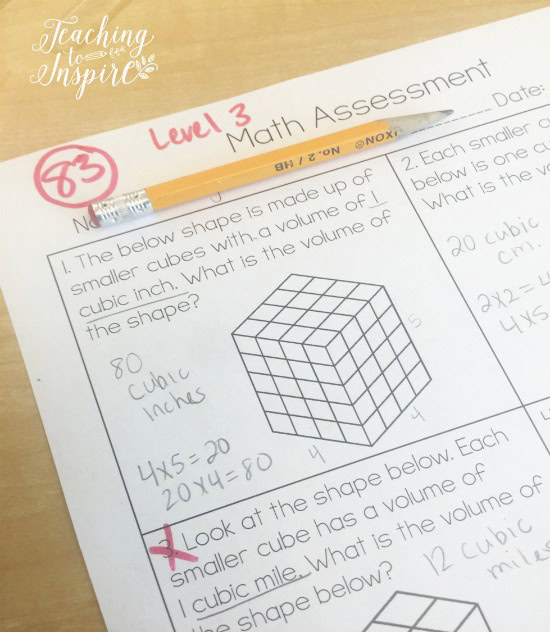
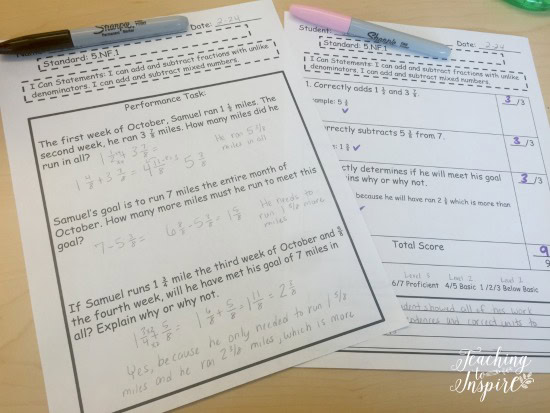
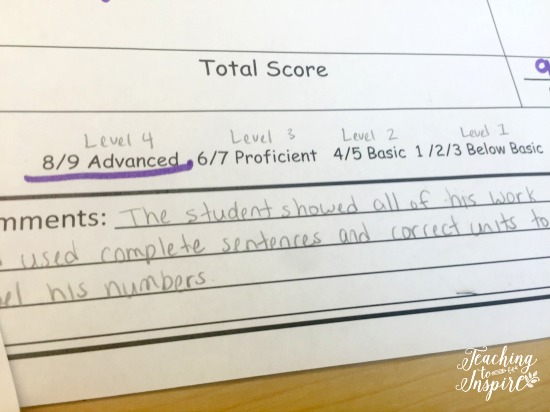
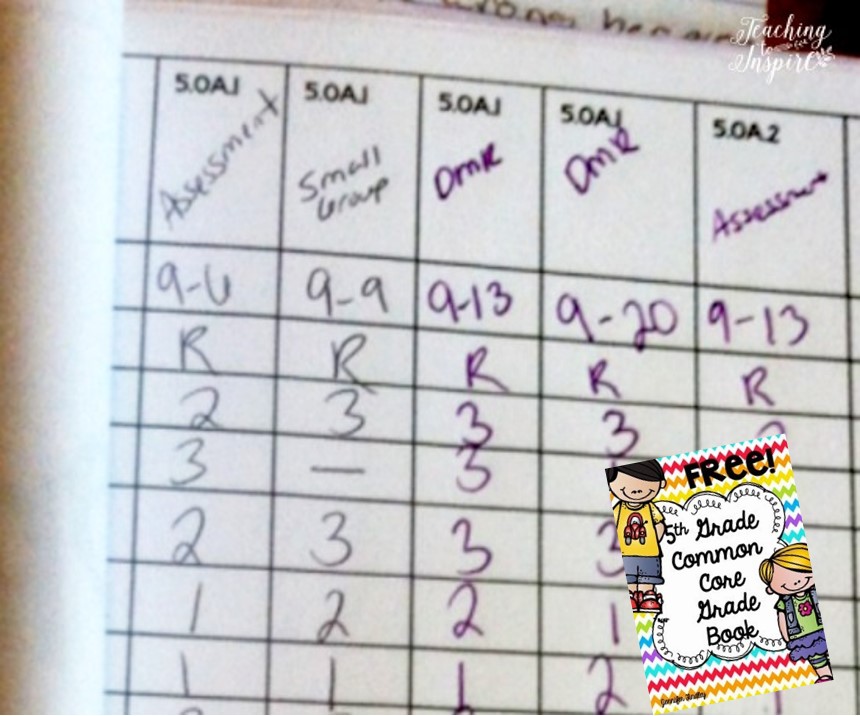
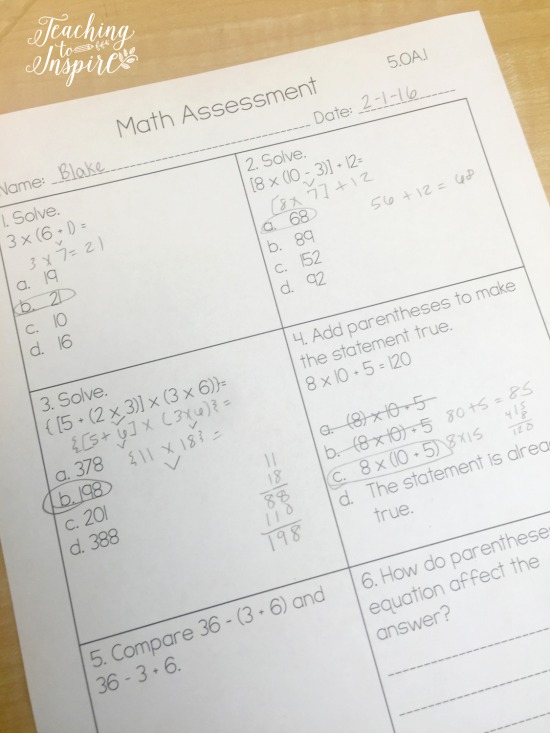







Although I understand that switching from percentages to standards-based assessment can be tricky to communicate to parents, our school district drilled it into us that we cannot assign percentages to each score. Perhaps it has to do with a difference between what 3s and 4s mean in your district compared to mine, but according to most rubrics I have seen a 3 usually means that a student is meeting the standard. Depending on how your percentages are calculated, that would mean that somewhere between 90-100% should actually be a 3. In our district a 4 means that you have demonstrated competency BEYOND the grade level standard so a 4 would be beyond 100%. Anyways, just some thoughts. I find your tips #4 and #5 to be very helpful.
Interesting thoughts, Samantha. We don’t have a 4 so maybe that is where the differences are coming from. I will add a note to my post though in case other districts are similar to yours. Thanks for your reply.
How do you get the percentage from the range for each level? Like in your example, what made that an 83 since the range is 80-70?
We switched to standard based grading last year, and I felt like a fish out of water. Your free grade book looks like an easy way to keep track. Thank you!
However, the thing you don’t address is how many times do you assess for each standard? For example, if a student doesn’t show proficiency the first assignment, I’d assume you’d practice some more and assess again a second time. What about a third time if they still aren’t proficient? Then come report card time, what standard score do you use? The average of all the times assessed, or the last standard score regardless of what it is?
I hope that makes sense!
What do you grade in math other than the end of lesson assessments?
I have been using so many of your materials for YEARS, as they are standards-based and aligned right with my curriculum. Your math “bundles” have so many activities that have already been differentiated, as well as transformed into digital options as well, which has been a true time-saver!